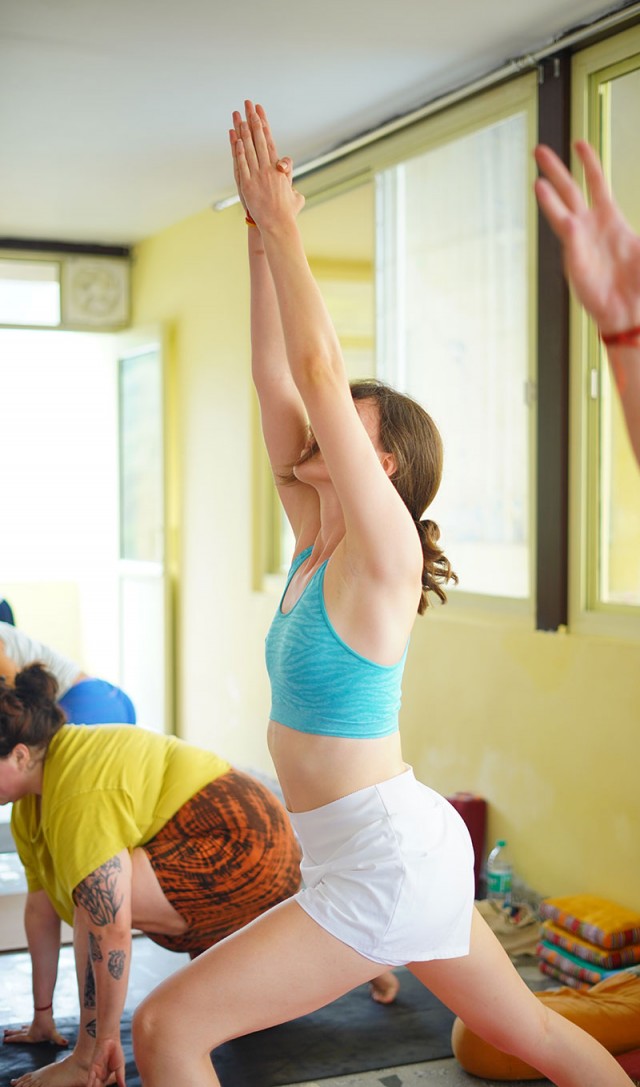The ancient practice of yoga nurtures physical strength and provides a sanctuary for the mind. Let’s explore some yoga poses that can contribute to a calmer and more centred mental state.
(Isstories Editorial):- Rishikesh, Uttarakhand Feb 14, 2024 (Issuewire.com) – Drishti Yogshala: Drishti Yogshala is yoga Alliance Certified Yoga school in rishikesh. provide certification yoga teacher training courses.
More on Isstories:
- MarketCrest LLC Secures Prestigious Gold in the Titan Business Awards for Search Engine Marketing Excellence
- Angeleno business owners preserving their ethnic communities
- SimpliDistance – Rise of the Specialist: Why Online MBAs with Focused Specializations are in Demand
- HireDynamicsDevelopers.com Announces the Entrance into the LATAM Market of Microsoft Dynamics Consultants
- Enhance Your Model Y Driving Experience with AceTesla.com’s Customized Accessories
Which yoga poses are good for mental health?
In our fast-paced world, finding moments of tranquility and mental well-being is crucial. As we navigate the challenges of daily life, incorporating yoga into our routine can be a powerful ally in fostering mental health. The ancient practice of yoga nurtures physical strength and provides a sanctuary for the mind. Let’s explore some yoga poses that can contribute to a calmer and more centred mental state.
1. Child’s Pose (Balasana):
Begin your journey to mental serenity with Child’s Pose. This restorative pose allows you to connect with your breath and turn inward, providing a sense of security and release. The child’s pose gently stretches the hips, thighs, and ankles, promoting relaxation and easing tension.
2. Downward-Facing Dog (Adho Mukha Svanasana):
Transition into a Downward-Facing Dog to invigorate the entire body. This pose not only strengthens the arms, shoulders, and legs but also encourages blood flow to the brain, alleviating stress and enhancing mental clarity. Focus on deep, rhythmic breathing to fully embrace the calming benefits.
3. Seated Forward Bend (Paschimottanasana):
Release mental tension and cultivate introspection with the Seated Forward Bend. This pose stretches the spine and hamstrings, relieving anxiety and promoting a sense of calm. Close your eyes, surrender to the stretch, and let go of any mental clutter.
4. Tree Pose (Vrikshasana):
Balancing poses like Tree Pose not only enhances physical stability but also cultivates mental focus and concentration. Rooting down through one leg while lifting the other activates core muscles, grounding the mind in the present moment and fostering a sense of equilibrium.
5. Corpse Pose (Savasana):
Embrace the power of stillness with Corpse Pose. The final relaxation at the end of a yoga session, Savasana, allows for complete surrender. As you lie down, let go of thoughts and tensions, allowing the body and mind to absorb the benefits of your practice. Savasana is a gateway to deep relaxation and mental rejuvenation.
6. Bridge Pose (Setu Bandhasana):
Bridge Pose is a gentle backbend that not only strengthens the spine and legs but also opens the heart. By expanding the chest, this pose releases pent-up emotions and encourages a positive flow of energy. Bridge Pose is an antidote to stress, promoting emotional well-being.
7. Cat-Cow Pose (Marjaryasana-Bitilasana):
Flow through the dynamic movements of Cat-Cow Pose to promote spinal flexibility and release tension in the back, neck, and shoulders. This rhythmic sequence encourages a mind-body connection, fostering mindfulness and reducing stress. Sync your breath with each movement to amplify its calming effects.
8. Legs Up the Wall Pose (Viparita Karani):
Incorporate this gentle inversion to soothe the nervous system and improve circulation. Legs Up the Wall Pose promotes relaxation and relieves symptoms of anxiety and insomnia. As you rest in this pose, allow the mind to unwind and surrender to a sense of peace.
9. Camel Pose (Ustrasana):
Open the heart and throat with Camel Pose, a powerful backbend that encourages emotional release. By stretching the front of the body, Ustrasana invites a sense of vulnerability and acceptance, promoting mental well-being and inner strength.
10. Mindful Breathing (Pranayama):
While not a physical pose, mindful breathing through pranayama techniques is an integral part of yoga for mental health. Techniques like deep belly breathing, alternate nostril breathing (Nadi Shodhana), and ujjayi breath help calm the nervous system, reduce stress, and enhance mental clarity.
Mindful Transitions for Mental Harmony:
In addition to the physical postures, integrating mindful transitions between poses enhances the overall mental benefits of your yoga practice. Emphasize the journey between poses, savouring each movement with awareness. Transition mindfully from Downward-Facing Dog to Forward Bend, feeling the subtle shifts in your body. Cultivate a sense of mindfulness during these transitions, acknowledging the present moment and allowing mental chatter to subside. These moments of conscious movement serve as a bridge, connecting the physical and mental aspects of your practice and reinforcing the therapeutic effects yoga has on your overall well-being.
So, incorporating these yoga poses into your routine can be a transformative journey toward mental well-being. As you flow through these postures, remember that yoga is not just a physical practice; it’s a holistic approach to nurturing both the body and mind. Embrace the stillness, connect with your breath, and let the healing power of yoga guide you on the path to mental serenity.




Drishti yogshala
[email protected]
Dheeraj Chauhan
Gulab Nagar, Upper Tapoovan Balak Nath Road, Lakshman Jhula
https://drishtiyogshala.com/
This article was originally published by IssueWire. Read the original article here.



































